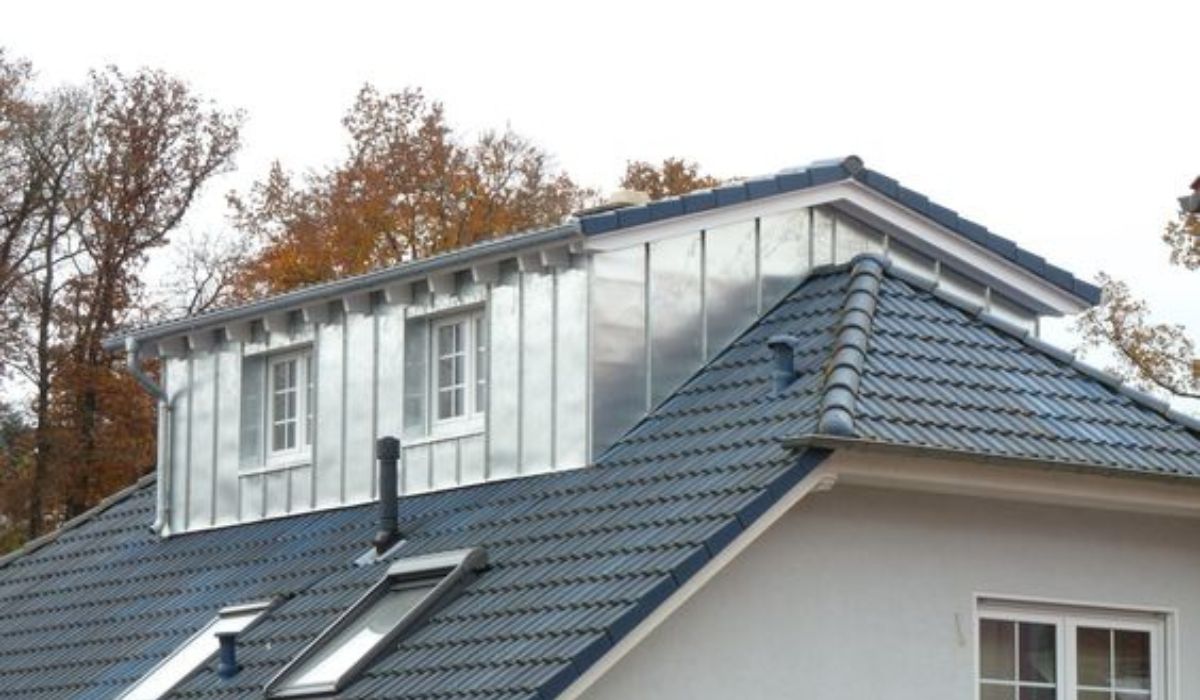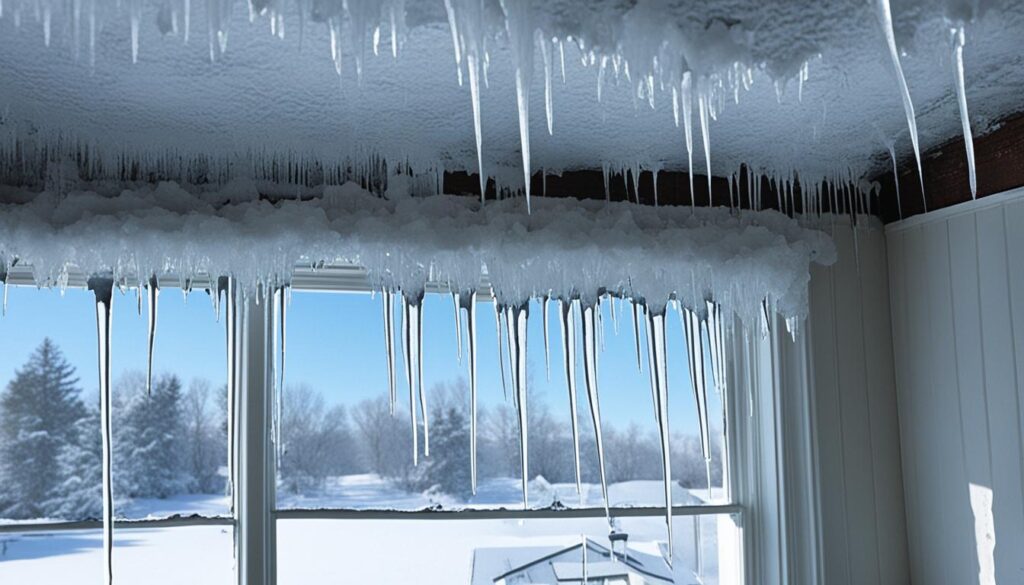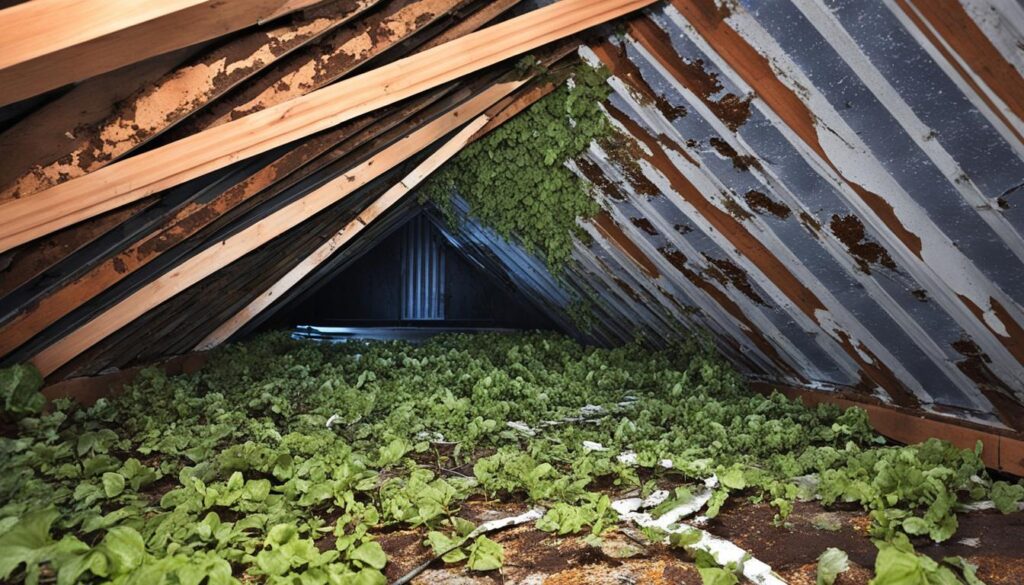
Have you noticed your top floor feels super hot in the summer? Does your roof look like it’s getting damaged for no clear reason? These could be signs of bad attic ventilation. A poorly ventilated attic can create a lot of issues in your home. It can cause problems like high energy bills or structural damage. But, how do you know if your attic’s ventilation is the main problem?
Seeing the warning signs is key. We’ll look at the key indicators you should be aware of. This way, you can make sure your home stays in good shape.
Key Takeaways
- Hot upstairs rooms during summer can be a sign of poor attic ventilation.
- Ice damming during winter months is another warning sign of improper attic ventilation.
- Mold formation and metal rusting in the attic indicate ventilation problems.
- Cracked or curling asphalt shingles can be a clear indication of poor attic ventilation.
Hot Upstairs Rooms during the Summer Months
Is your upstairs always too hot in the summer? It might be a sign of poor attic ventilation. The hot air is stuck in the attic because it doesn’t have enough airflow. Without fresh air, this hot air moves down into your rooms, making them hard to cool.
Good attic ventilation helps keep your home at a comfortable temperature. It lets hot air out, and cool air in. This creates a balance of air throughout your house.
Poor attic ventilation can make you uncomfortable, but that’s not all. It can also raise your energy bills. Your AC must work more to cool your home with all the extra heat. If you improve attic ventilation, you can lower these costs and save money.
Ice Damming during the Winter Months
One big sign of poor attic ventilation is ice damming in winter. Warm attic air can melt snow or ice on your roof. Then, it refreezes at the edges, causing a blockage. This blockage can make water leak into your home, leading to damage.
Good attic ventilation keeps your roof at a steady temperature. This stops ice dams from forming. It works by letting cool air into the attic and pushing out hot air. Doing this helps to keep your roof cold, preventing ice from melting and refreezing at the edges.
Seeing icicles near your roof’s edge means you might have ice dams. This happens when your attic doesn’t have enough ventilation. Fixing the ventilation can stop roof damage and make your roof last longer.

Mold Formation and Metal Rusting in the Attic
Poor airflow in the attic can cause mold and mildew. Without enough air, moisture builds up and causes a humid space. This is perfect for mold to grow, making your family sick if you breathe in the spores.
To spot mold, check the insulation and wood in the attic. If you see mold, smell something musty, or notice stains, your attic’s ventilation may be bad. It’s important to fix this right away.
Bad attic airflow not only causes mold. It also makes metal items in the attic rust. This happens because the air’s moisture can wear down nails, tools, and ducts. If you see rust, it’s a sign that your attic’s air isn’t flowing well.
Good attic airflow is key for a healthy home. It keeps moisture in check, stopping mold and protecting metal from rust. This way, your house stays strong and your family stays safe.
“Attic ventilation plays a crucial role in preventing mold growth and rusting of metal components. It’s important to address attic ventilation issues to maintain a healthy and structurally sound home.” – HVAC and roofing specialist, Mark Johnson
By ensuring your attic is well-ventilated, you avoid problems and make your home comfy. Always check your attic ventilation and get help if needed. Solving issues early saves you from big, expensive repairs later.

Cracked or Curling Asphalt Shingles
Poor attic ventilation is a big deal for your roof and shingles. It leads to too much heat in the summer. This heat makes the adhesives in your roof’s wood get weaker over time. Eventually, your shingles could crack or curl, making your roof less strong.
This issue can also make the adhesives and nails that hold your shingles down get worse. Then, your shingles may start to come off. If you see cracked, curled, or missing shingles, this means your attic isn’t ventilated well. You should fix this to avoid damage that can be costly to repair.
To keep your roof in good shape, you need to make sure your attic has good ventilation. Adding vents, like soffit, ridge, or gable vents, can help. They let fresh air come in and keep your attic from getting too hot. It also helps to check your insulation and seal any air leaks. This will protect your shingles and help your roof last longer.
Recommended

Meet William Adams, a seasoned roofing expert with over 30 years of hands-on experience in the industry. Having worked tirelessly under the scorching sun and through the fiercest storms, William brings a wealth of knowledge and expertise to the table. Hailing from the heart of the USA, he’s witnessed the evolution of roofing practices firsthand, mastering every aspect along the way. Now retired from the field, William spends his days cherishing time with his loved ones while sharing his invaluable insights through this platform. With William at the helm, you can trust that every tip, advice, and recommendation provided is backed by years of real-world experience and unwavering dedication to quality craftsmanship. Join us as we journey through the world of roofing, guided by the wisdom and passion of a true industry veteran.
